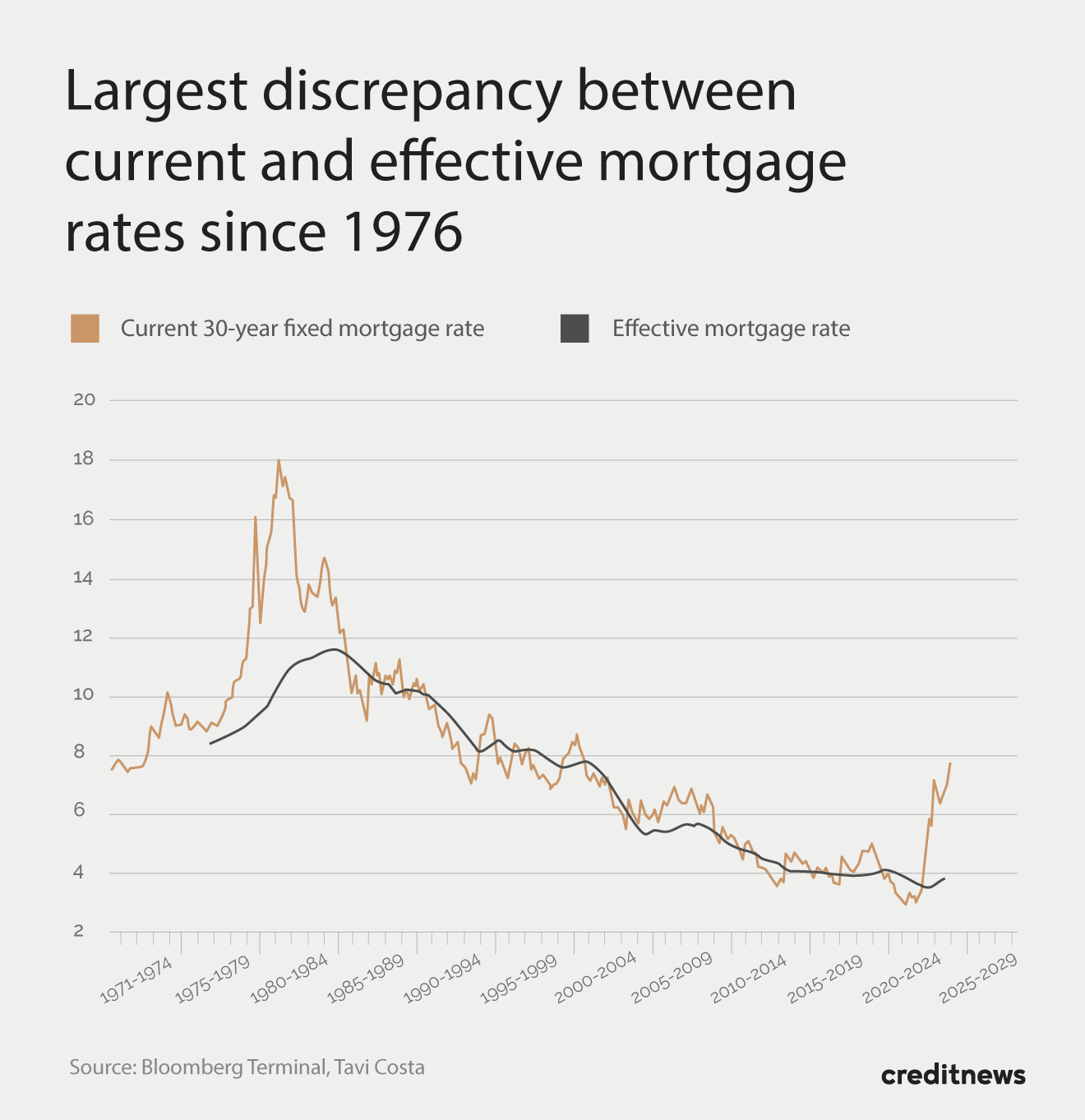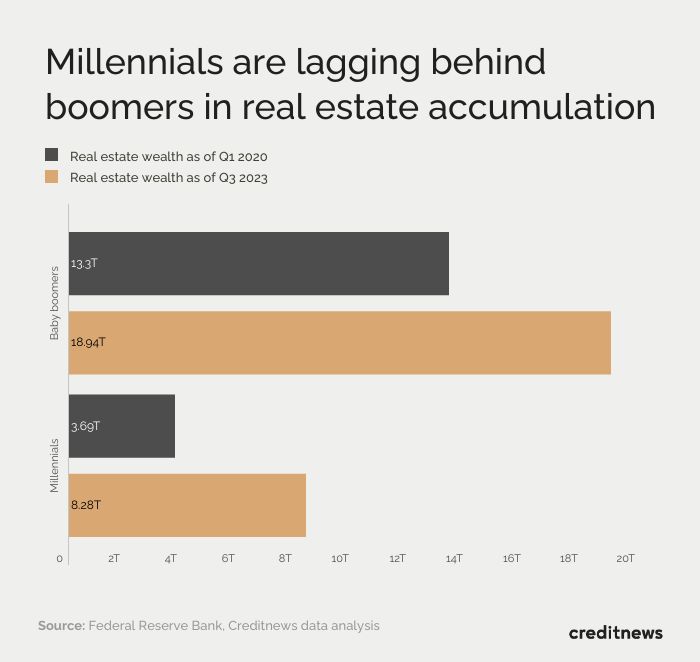Millennials own less than half the real estate wealth of boomers—can they catch up?

phloxii // Shutterstock
Millennials own less than half the real estate wealth of boomers—can they catch up?
house made of clouds to illustrate concept of homeownership dream
The dream of homeownership is slipping away for younger generations—thanks to a vicious cycle of high mortgage rates and a chronically low supply of houses.
According to the National Association of Realtors (NAR), millennials were the most active homebuyers from 2014 through 2021. Not anymore.
Since early 2023, boomers have overtaken millennials, making up 39% of homebuyers—the most of any generation. That’s a whopping 29% jump from a year before.
Meanwhile, Gen Zers are trailing woefully behind, accounting for just 4% of home transactions, according to the latest NAR data.
The way the housing market is, the trend isn’t likely to reverse anytime soon.
The worst housing market for first-time buyers?
The impact of mortgage rates on the generational home divide can’t be overstated.
According to a recent report from Creditnews, more than 40% of all U.S. mortgages were obtained in 2020-2021 when interest rates were at rock bottom.
And nearly two-thirds of current mortgage holders locked in rates below 4%—almost 3 percentage points lower than the current 30-year mortgage rate.
The result is new homeowners must take out mortgages at much higher rates than the average rate of current mortgage holders—also known as the effective mortgage rate.
![]()

Creditnews
The gap between 30-year fixed and effective interest rates is the widest since the 1970s
graph showing largest discrepancy between current and effective mortgage rates since 1976
Higher mortgage interest rates don’t just make houses less affordable for new buyers, they also disrupt supply. That’s because existing homeowners don’t want to sell their houses and give up their cheap mortgages. Consequently, whatever housing supply makes it to market comes at disproportionally higher prices.
This “sit and wait” philosophy is fueling one of the largest housing shortages in America’s history.
Industry experts say a housing market is healthy when there is between five and six months of supply. At the current sales pace, existing home supply is roughly half that level.
And there are few signs that supply will pick up soon. According to the latest Redfin data, home inventory has been in decline since last October.
In these market conditions, younger first-time buyers are out of luck. Not only do they need more income, they have to outbid older buyers flush with home equity and cash.

Creditnews
Millennials making headway but still falling behind
graph showing real estate wealth difference between millennials and boomers
Despite being the largest generation entering their prime homebuying age, millennials still own a mere 18.2% of real estate wealth—a far cry from boomers’ 41.6% share, according to Fed data.
And while millennials made significant headway during and after Covid, their accumulation of real estate wealth still fell behind boomers:
Experts think millennials will have a hard time catching up. “Baby boomers have the upper hand in the homebuying market,” said Dr. Jessica Lautz, NAR deputy chief economist, adding: “The majority of [boomers] are repeat buyers who have housing equity to propel them into their dream home—be it a place to enjoy retirement or a home near friends and family. They are living healthier and longer and making housing trades later in life.”
This story was produced by Creditnews and reviewed and distributed by Stacker Media.





